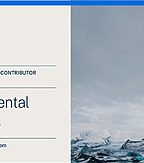Article | 1 April 2025
Proposed Law for State Aid in Nuclear Investments

The government of Sweden proposes, through prop. 2024/25:150, a new law that will regulate the fundamental conditions and forms of state aid to companies for investments in new nuclear reactors in Sweden. The new law is proposed to come into force on 1 August 2025 and entails that the government, upon application by nuclear power developers, will be able to grant state aid in the form of state loans and two-way contracts for difference (“CFDs”).[1] The government’s decision on aid shall not be subject to appeal.
The proposal is based on the investigation that resulted in the memorandum “Financing and Risk Sharing in Investments in New Nuclear Power” (Fi 2023:F) which was submitted on 12 August 2024. Unlike the memorandum, the government’s proposal also includes provisions on how the state aid should be designed and that the conditions for the aid should be regulated through agreements between the state and the company receiving state aid.
State loans may according to the proposal be granted for the construction and trial operation of new nuclear reactors as well as for planning and other preparatory measures before construction. Two-way CFDs may be entered into for routine operation of new nuclear reactors.
According to the proposal, state aid should only be granted if the new nuclear reactors are located at the same site in Sweden and have a total installed electrical capacity of at least 300 MW. This is because the government believes that state aid is only justified for projects that make a significant contribution to the implementation of a fossil-free energy system and to ensure a robust and secure electricity supply. If the total installed capacity is less than 300 MW, the government should however be able to grant aid if there are special reasons. The government does not specify any concrete examples of what may constitute special reasons but highlights that it is difficult to foresee all circumstances that may arise where the minimum limit may prove to be an undesirable obstacle. According to the proposal, the government should therefore have the opportunity to make exceptions if projects below 300 MW are still deemed to make a significant contribution to meeting the needs identified in the proposition.
The proposal further suggests that the conditions of the loan agreements and CFDs should include a risk and profit-sharing mechanism. The government states that a mechanism for sharing the risk of unfavourable project outcomes helps to lower the owners’ return requirements and thus the cost of producing nuclear power electricity. Risk sharing in unfavourable outcomes can, for example, enable the strike price in the CFDs to be negotiated to a lower level than would have been required without such a component in the model. Through a profit-sharing mechanism, the state and electricity consumers, who bear the risk of unfavourable outcomes, also share in the profits in favourable project outcomes.
Another requirement that, according to the proposal, must be met for state aid for a nuclear power project to be granted is that the applicant company exclusively, or almost exclusively, has as its business to construct, own and operate the new nuclear reactor or reactors that a decision on aid concerns, meaning it should be a dedicated project company. Furthermore, the company must have applied for permits under the Swedish Nuclear Technology Act and the Swedish Environmental Code for aid to be granted. This is in contrast to the memorandum which proposed that such permits should already have been obtained for state aid to be granted.
Further requirements are placed on the companies’ owners and management. The government’s review of the application is proposed to include an assessment of the suitability of the owners who have a qualified holding of shares in the company as well as persons who are part of the company’s management. Changes in ownership and management conditions should also be followed up through, for example, conditions in the state aid agreements.
Setterwalls is diligently monitoring the ongoing development of the proposal and remains available to provide expert assistance with any inquiries. Please feel free to reach out to us for further guidance.
[1] A two-way contract for difference means a contract between an operator of a power production facility and the state that provides both a minimum compensation protection and a limit for overcompensation.


